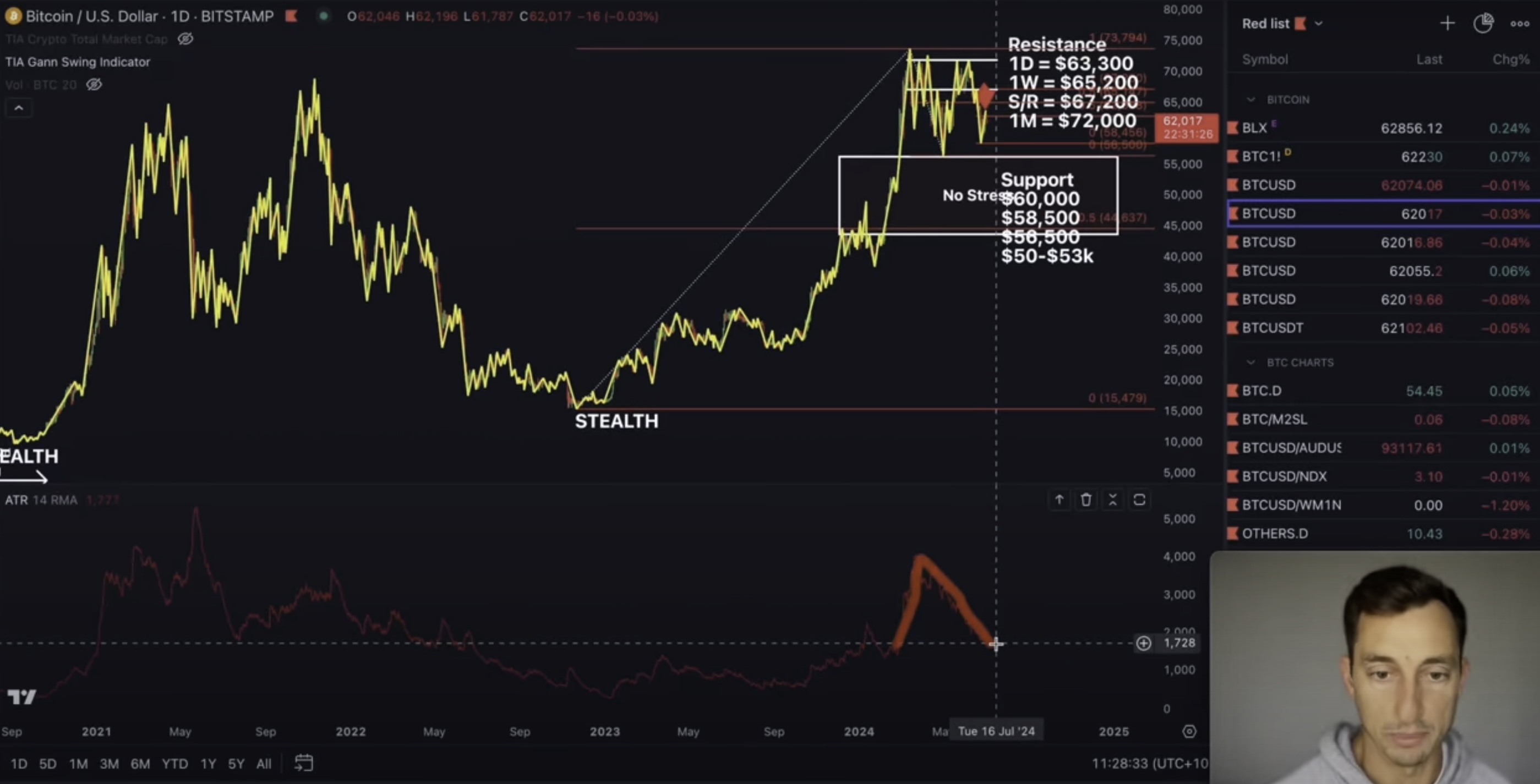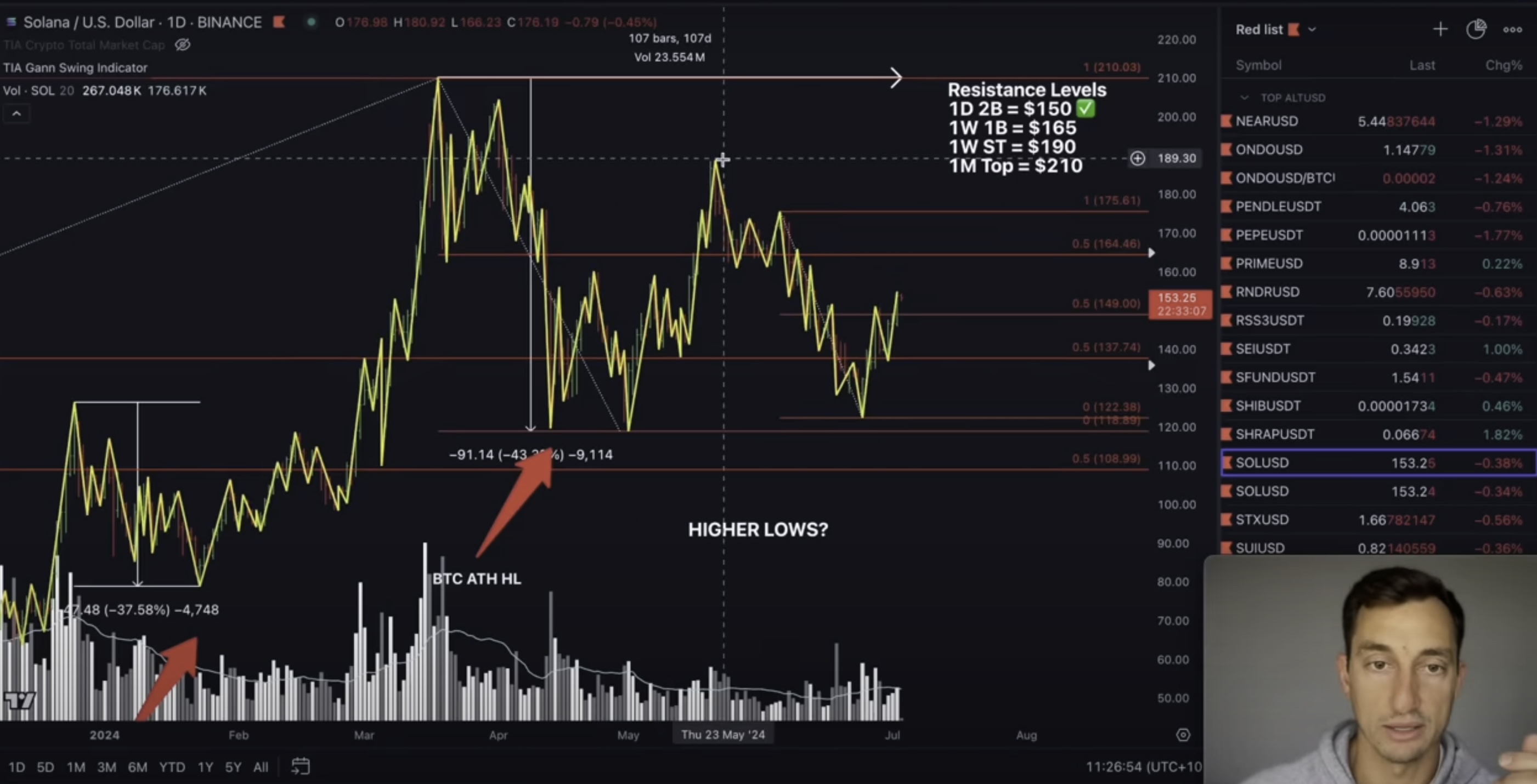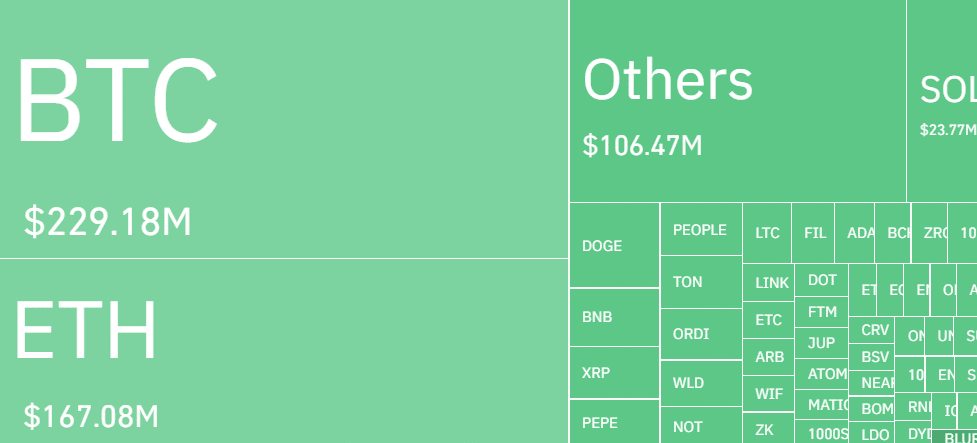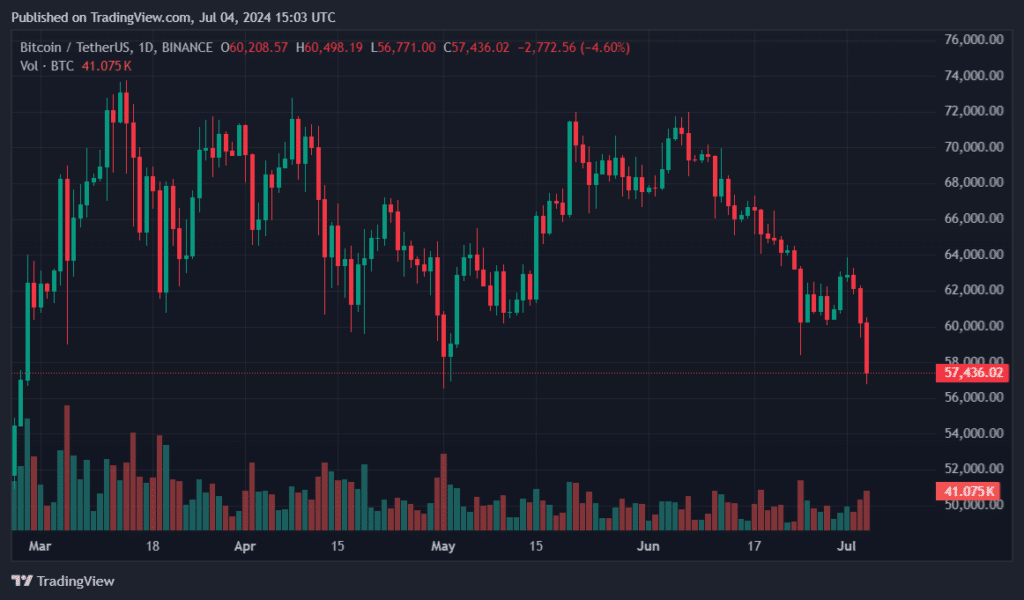Bitcoin
Why Joe Biden Hates Bitcoin
Published
4 weeks agoon
By
admin

Over the last four years, President Joe Biden has demonstrated a clear reluctance to support the Bitcoin and cryptocurrency industry, as recently evidenced by his veto of significant legislation and the broader stance of his administration. On May 31, Biden vetoed a pivotal bill that would have allowed highly trusted financial institutions to custody Bitcoin and other cryptocurrencies.
BREAKING: 🇺🇸 President Biden vetoes bill that would allow highly regulated financial firms to custody #Bitcoin and crypto. pic.twitter.com/TMHavdWRx7
— Bitcoin Magazine (@BitcoinMagazine) May 31, 2024
The legislation in question had garnered bipartisan support in both the House and Senate. It aimed to provide a regulatory framework that would enable banks and other financial entities to securely hold digital assets, thereby further integrating Bitcoin into the mainstream financial system. Proponents of the bill argued that such a framework would enhance security of spot Bitcoin ETF funds by distributing the honeypot of coins currently held by only a couple institutions, promote innovation, and help facilitate the growth of the Bitcoin industry. However, Biden’s veto reflects his administration’s lack of support for the industry, where the President previously compared crypto traders to “wealthy tax evaders”.
The Biden Administration also published a report attacking Bitcoin and Proof of Work mining, promoting a Central Bank Digital Currency (CBDC) instead, stating “A U.S. CBDC would have the potential to offer significant benefits”. Biden wanting to embrace a CBDC, which would allow the Federal government to have complete control over their citizens finances, further shows his true colors and reasoning for not supporting Bitcoin.
Recently, Joe Biden’s Department of Justice arrested the founders of popular privacy focused Bitcoin mixing service, Samourai Wallet, and charged them with money laundering. U.S. Senator Cynthia Lummis defended the Samourai founders, stating that “this stance contradicts existing Treasury guidance, common sense, and violates the rule of law.” Renowned whistleblower Edward Snowden also commented on the arrest:
NEW: Edward Snowden on the U.S. Department of Justice arresting #Bitcoin mixing service Samourai Wallet founders and CEO pic.twitter.com/qmigHJzmZU
— Bitcoin Magazine (@BitcoinMagazine) April 24, 2024
In addition, the Democratic Party in general has also shown a reluctance to support pro-Bitcoin legislation. Key figures like Senator Elizabeth Warren have been particularly vocal in their opposition to the crypto industry. Warren has often criticized cryptocurrencies for their environmental impact and regulatory challenges, and infamously stated that she is “building an anti-crypto army” to address what she perceives as the industry’s threats to financial stability and consumer protection.
In stark contrast, former President Donald Trump has recently embraced Bitcoin and cryptocurrencies. On June 1, 2024, Trump announced that his campaign would accept Bitcoin payments through the Lightning Network, facilitated by OpenNode, a Bitcoin and Lightning Network infrastructure provider. Trump has recently said that he “will ensure that the future of crypto and Bitcoin will be made in the USA…I will support the right to self custody to the nations 50 million crypto holders”. Trump has also recently stated that he is “very positive and open minded to crypto companies,” and that “Our country must be the leader in the field. There is no second place.”
Despite the Democrats’ stance, the Bitcoin industry is becoming an increasingly influential force in U.S. politics. Recent polls indicate that crypto voters are largely nonpartisan, with no significant leaning towards either the Republican or Democratic parties. This demographic represents a substantial and growing portion of the electorate, with over 50 million Bitcoin and crypto holders in the United States. As the 2024 Presidential election approaches, Bitcoin policy is emerging as a critical issue for candidates to address.
The evolving stance of political leaders on Bitcoin and cryptocurrencies underscores the growing importance of these assets in shaping economic and regulatory policies. For Biden, his reluctance to embrace Bitcoin is alienating a significant segment of the voter base. Crypto advocates argue that clear regulatory frameworks and mainstream acceptance of Bitcoin would drive economic growth, foster innovation, and enhance financial inclusion. However, the Biden administration’s focus remains on preventing that from happening.
The rise of Bitcoin has introduced new dynamics into the political landscape. While Bitcoin operates in a nonpartisan manner, appealing to individuals across the political spectrum, this does not mean all politicians will embrace it. Joe Biden and the Democrats are turning a non-partisan technology into a partisan issue.
In conclusion, the Biden administration and majority of Democrats favor a CBDC over a decentralized cryptocurrency like Bitcoin. A CBDC aligns more with Biden and the Democrats than Bitcoin, as Bitcoin is less appealing to them because it does not help them achieve their aspiring authoritarian goals.
As the 2024 Presidential election looms, the role of Bitcoin policy in shaping voter preferences and political strategies is becoming increasingly evident. With over 50 million Bitcoin and crypto holders in the United States, the decisions of political leaders on digital assets will likely play a pivotal role in the upcoming election, reflecting the growing significance of Bitcoin in the broader economic and political landscape.
Source link
You may like


Multicoin Capital pledges up to $1m to pro-crypto Senate candidates


MATIC Price Crash: Reaching A Two Year Low


Multicoin Pledges up to $1M for Pro-Crypto Senate Candidates


Crypto heists near $1.4b in first half of 2024: TRM Labs


FTX Founder Sam Bankman-Fried’s Family Accused Of $100M Illicit Political Donation


Bitcoin Price Falls as Mt Gox Starts Repayments
Altcoins
Here Are Price Targets for Bitcoin, Solana, and Render, According to Analyst Jason Pizzino
Published
11 hours agoon
July 5, 2024By
admin
A closely followed crypto strategist and trader is revealing his price targets for Bitcoin (BTC) and two altcoin projects.
In a new strategy session, analyst Jason Pizzino tells his 329,000 YouTube subscribers that based on the average true range (ATR) indicator Bitcoin could soon break through key price target resistance levels.
The ATR indicator measures volatility by showing an asset’s trading range over a specified period.
“You can see the dying off here of the average true range of the bar. Previous cycles, look what happened. Average true range picks up, dies off, dies off, dies off, and then you start to get a higher low form and by that stage, you’re really a decent way from the stealth zone.”

According to the analyst, Bitcoin has historically made “stealth moves” to the upside when the ATR indicator reaches a local low and price continues to consolidate or puts in higher lows.
The analyst’s key price targets to the upside include $63,300 on the daily chart, $65,200 on the weekly chart and $72,000 on the monthly chart.
Bitcoin is trading for $60,176 at time of writing, down nearly 3% in the last 24 hours.
Next up, the analyst believes that Ethereum (ETH) competitor Solana (SOL) will move toward its current cycle top.
“With the higher lows and now trying to push higher above the 50% at $137. Next target on the weekly chart is $165. And then we go towards $190, $210. So $190 is above these tops. Then $210 is the current top for Solana. So it’s on its way. It hasn’t got those longer-term time frames confirmed yet, and those longer terms are the weeklies.”

Solana is trading for $141 at time of writing, down more than 8% in the last 24 hours.
Lastly, the analyst predicts that Render (RNDR), the graphics processing unit (GPU) rendering blockchain, will reclaim a double-digit value.
“Now, what do we need to see until it gets there? Obviously higher lows, and that would happen throughout this next couple of months, maybe even up to four months as we get to that [US presidential] election… If I keep seeing higher lows, it’s not going to stop me from getting into the market if it breaks out through that period.”

Render is trading for $7.04 at time of writing, down 7.7% in the last 24 hours.
Don’t Miss a Beat – Subscribe to get email alerts delivered directly to your inbox
Check Price Action
Follow us on X, Facebook and Telegram
Surf The Daily Hodl Mix
 

Disclaimer: Opinions expressed at The Daily Hodl are not investment advice. Investors should do their due diligence before making any high-risk investments in Bitcoin, cryptocurrency or digital assets. Please be advised that your transfers and trades are at your own risk, and any losses you may incur are your responsibility. The Daily Hodl does not recommend the buying or selling of any cryptocurrencies or digital assets, nor is The Daily Hodl an investment advisor. Please note that The Daily Hodl participates in affiliate marketing.
Generated Image: Midjourney
Source link
Bitcoin
Bitcoin price plunges below $55k as Mt. Gox announces repayments
Published
11 hours agoon
July 5, 2024By
admin
The price of Bitcoin has continued its descending movement, sliding under the $55,000 threshold, returning back to levels last seen in February.
Bitcoin’s (BTC) sell-off has intensified amid reports that the collapsed crypto exchange Mt. Gox moved over 47,000 BTC (worth around $2.6 billion) to a new wallet ahead of its $9 billion payout. At the time of writing, the price of Bitcoin is $54,561, a mark last witnessed in February, when the largest by market capitalization cryptocurrency was surging to a new all-time high.
Following the transaction, Mt. Gox trustee officially confirmed on Jul. 5 during Friday’s Asian trading hours that the collapsed exchange “made repayments in Bitcoin and Bitcoin Cash to some of the rehabilitation creditors.” The trustee didn’t specify though the amount of BTCs sent to creditors.
The crypto market has faced significant pressure recently, affecting both investor sentiment and miner operations following the April halving, which reduced mining rewards from 6.25 BTC to 3.125 BTC. At Bitcoin’s current price, only five ASIC rigs from Avalon and Antminer remain profitable, according to f2pool’s X post.
⛏️With #Bitcoin trading below $58k, what is the current profitability for mining?
At a rate of $0.08/kWh, ASICs less efficient than 23 W/T operate at a loss.
For more details on mainstream miners, please refer to the table below. pic.twitter.com/hJS1lsVnmK
— f2pool 🐟 (@f2pool_official) July 4, 2024
The rapid drop below $55,000 has pressured speculators, resulting in $682 million in liquidations of both long and short positions across multiple exchanges, according to Coinglass.

Over the past 24 hours, more than 235,000 traders were liquidated, with the largest single liquidation order on Binance’s ETH/USDT trading pair valued at over $18.4 million. According to CoinGecko, the total crypto market capitalization dropped by over 8% to $2 trillion, increasing sell-offs among speculators.
As crypto.news reported earlier, TRON founder Justin Sun offered to help the industry by teasing his “willingness” to buy confiscated Bitcoins from the German government over-the-counter. It’s unclear when these negotiations will begin, but with the recent movement of Bitcoins to centralized exchanges from Germany-labeled addresses, Mt. Gox’s repayments have seemingly become the primary concern among traders.
Source link
Bitcoin
Bitcoin’s quick dip below $57k forces beginners to capitulate, CryptoQuant says
Published
17 hours agoon
July 5, 2024By
admin
As Bitcoin plunged below the $57,000 mark, concerns surged among investors about potential market volatility and its impact on miners.
On Thursday morning, speculators continued their selling pressure, forcing Bitcoin (BTC) to dip below $57,000 for the first time since February. As of press time, Bitcoin rebounded above the $57,000 mark, but its previous quick plunge might signal weakness, potentially impacting sentiment among retail traders.

Blockchain research firm CryptoQuant noted that crypto beginners — who bought BTC over the past six to three months — have started moving their coins amid the plunge and “increasing selling pressure.” According to the platform’s data, approximately $2.4 billion worth of BTC controlled by crypto beginners began moving, likely signaling their intention to sell at current market prices.
The market turbulence might also be worsened by miners, who are facing a rapid drop in hashprice, a metric representing miner revenue per terahash. Crypto mining analytics firm Hashrate Index noted that the hashprice mark amid Bitcoin’s plunge is “scratching its all-time low,” a level last seen during the bear market. As of press time, hashprice is at $44.69, potentially pushing some miners to liquidate their reserves to sustain operational expenses.
In a May exclusive interview with crypto.news, CryptoQuant head of research Julio Moreno noted that the market is “likely to see a miner capitulation if prices don’t recover significantly during the summer,” adding that the hashprice (average miner revenue per hash) is repeatedly “making new lows” following the latest halving. At the time of writing, Bitcoin is trading at $57,336, according to data from crypto.news.
Source link

Multicoin Capital pledges up to $1m to pro-crypto Senate candidates

MATIC Price Crash: Reaching A Two Year Low

Multicoin Pledges up to $1M for Pro-Crypto Senate Candidates

Crypto heists near $1.4b in first half of 2024: TRM Labs

FTX Founder Sam Bankman-Fried’s Family Accused Of $100M Illicit Political Donation

Bitcoin Price Falls as Mt Gox Starts Repayments

20% Price Drop Follows $87 Million Spending Outrage

More than 10 years since the collapse of Mt. Gox, users confirm reimbursements

Leading Telecom Company Taiwan Mobile Gets Crypto Exchange License

Here Are Price Targets for Bitcoin, Solana, and Render, According to Analyst Jason Pizzino

Bitcoin price plunges below $55k as Mt. Gox announces repayments

Jasmy Sheds 20% Amid Bitcoin Sell-Off

Are they a good thing?

Mt. Gox Transfers $2.7 Billion in Bitcoin From Cold Storage Amid Market Rout

What’s Next For Ethereum (ETH) as Price Hovers $3,000?

Bitcoin Dropped Below 2017 All-Time-High but Could Sellers be Getting Exhausted? – Blockchain News, Opinion, TV and Jobs

What does the Coinbase Premium Gap Tell us about Investor Activity? – Blockchain News, Opinion, TV and Jobs
BNM DAO Token Airdrop

NFT Sector Keeps Developing – Number of Unique Ethereum NFT Traders Surged 276% in 2022 – Blockchain News, Opinion, TV and Jobs
A String of 200 ‘Sleeping Bitcoins’ From 2010 Worth $4.27 Million Moved on Friday
New Minting Services

Block News Media Live Stream

SEC’s Chairman Gensler Takes Aggressive Stance on Tokens – Blockchain News, Opinion, TV and Jobs

Friends or Enemies? – Blockchain News, Opinion, TV and Jobs

Enjoy frictionless crypto purchases with Apple Pay and Google Pay | by Jim | @blockchain | Jun, 2022

How Web3 can prevent Hollywood strikes

Block News Media Live Stream

Block News Media Live Stream

Block News Media Live Stream

XRP Explodes With 1,300% Surge In Trading Volume As crypto Exchanges Jump On Board
Trending

 Altcoins2 years ago
Altcoins2 years agoBitcoin Dropped Below 2017 All-Time-High but Could Sellers be Getting Exhausted? – Blockchain News, Opinion, TV and Jobs

 Binance2 years ago
Binance2 years agoWhat does the Coinbase Premium Gap Tell us about Investor Activity? – Blockchain News, Opinion, TV and Jobs
- Uncategorized3 years ago
BNM DAO Token Airdrop

 BTC1 year ago
BTC1 year agoNFT Sector Keeps Developing – Number of Unique Ethereum NFT Traders Surged 276% in 2022 – Blockchain News, Opinion, TV and Jobs

 Bitcoin miners2 years ago
Bitcoin miners2 years agoA String of 200 ‘Sleeping Bitcoins’ From 2010 Worth $4.27 Million Moved on Friday
- Uncategorized3 years ago
New Minting Services

 Video2 years ago
Video2 years agoBlock News Media Live Stream

 Bitcoin1 year ago
Bitcoin1 year agoSEC’s Chairman Gensler Takes Aggressive Stance on Tokens – Blockchain News, Opinion, TV and Jobs

